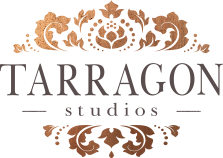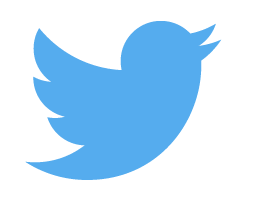Is Your Logo an Asset or a Liability? Take the test to find out!
Is your relationship with your logo somewhat uneasy? Are you unsure exactly how your logo should fit into your business plan - or if it should factor in at all?
That's ok! A lot of entrepreneurs feel a certain level of trepidation when it comes to defining their brand visually and creating their logo. It's like trying to speak a different language, but instead of words, you have to communicate with shapes and colors!
It's a language we all subconsciously speak, but bringing what you "know" to the front of your mind is often extremely difficult. This is why a lot of the time you may not know how to describe what you like, but you'll "know it when you see it."
The purpose of any "good" logo is to communicate who you are to your audience at a glance. If done well, it can be the one thing that helps your audience remember you when they need your product or service. A good logo is an essential asset to your business, while a bad one can be the exact opposite.
what makes a "good" logo?
Believe it or not a "good" logo can actually be quantified!
I know, I know: "but a logo is art - it's all subjective!" Yes - sort of.
It's true that art is subjective. But a logo is a very special kind of art and many people, much smarter than me, have studied why we love some logos and hate others.
There is actually a science behind the design aesthetic of a logo and criteria we can use to sort out good logos from bad ones. Below are the 8 criteria we can use to determine how effective a logo is (adapted from Paul Rand's logo ranking system):
unique
memorable
adaptable
timeless
appropriate
universal
iconic
SIMPLE
Pish Posh Designs give an excellent run down of the qualities that make a good logo but my absolute favorite article on good logo design is from TNW. This article takes an in-depth look at the qualities Paul Rand (legendary graphic designer) crafted into his logos.
Another fantastic resource that outlines the criteria for an excellent logo and the logo design process can be found at LogoDesign.net: “The Ultimate Step-by-Step Guide to Logo Design.”
For a quick read on the important points of logo design, check out: “Logo Design Guide: 7 Tips Moving Into 2019”
1. Unique
Your logo's "uniqueness" is determined by how well it stands out.
Does your logo look like every other logo in your industry?
Can your logo be confused with another company's logo?
Your logo's primary purpose is identification, so it's uniqueness is even more important than communication. If you confuse your audience, then really, what's the point?
The re-brand for Cornerstone Investment Services (CIS) is the perfect example of trading a homogeneous logo for a distinctive one.
Cornerstone started out with an iteration of the typical square block logo that every company named "Cornerstone" used. They didn't exactly stand out from the crowd.
This situation absolutely needed to change, especially since Cornerstone's main competitive advantage was that they were different from the typical Wall Street firm... that's a hard sell when you look like everyone else.
We started by doing a little market research and looked at other firms in their industry. What imagery were they using in their logo's?
Bulls and Bears were all the rage, so we parodied those elements by using an elephant. The elephant has weight and strength, both positive associations for an investment firm and qualities that coincide with the word "cornerstone."
The uniqueness of the company defined the uniqueness of the logo and understanding the industry, gave us the context to play with and parody.
For more info on exactly how to craft a unique logo, check out: "5 Secrets for Making Your Logo Stand Out"
2. memorable
Creating a memorable logo involves two factors: simplicity and surprise. We'll look at simplicity in-depth at the end, so here we'll focus on the element of surprise.
Once again, CIS is a great example of a logo with the element of surprise. When looked at in the context of all the other companies in the financial industry, that elephant is extremely distinctive. I've even had printers tell me that they remembered that logo!
By taking an "industry standard" look and changing it to suit the company's unique qualities, we were able to craft a logo that stood out for the right reasons.
This concept of "surprise" is accomplished by creating something purposefully dissonant to stick in the viewers mind. Again Entrepreneur has some great advise here: "How to Make Your Logo Memorable"
A couple other examples of logos that are memorable for being simple and surprising are:
The hidden arrow in FedEx adds that little element of surprise, just like the music note hiding in the ink and pen. It's that small unexpected quality that makes a logo memorable.
The best part about these two surprises is that they both are derived from what the company does!
NOTE: A good test to determine whether or not your logo is going to be memorable is to take a look at it and then try to draw it from memory an hour later. If you can't remember the main features of the logo, chances are, it's not going to be very memorable.
3. adaptable
Your logo's versatility refers to its ability to adapt to being placed in different situations.
As your company grows, you'll need to put your logo in many different places: social media profile images, business cards, pens, hats, website headers, publications, dark backgrounds, colorful backgrounds, etc.
Can your logo maintain it's identifiable qualities when scaled down or placed on a dark background or printed on a pen?
Is there a situation that you won't be able to use your logo for?
Can your logo be printed in one color and still be recognizable?
To make sure that your logo will be versatile be sure to:
Craft your logo in black and white first to create a memorable shape and then add color last.
Request logo variations with your main logo design, that way you'll always have the perfect size version of your logo for every situation.
4. timeless
Just like a little black dress or an Armani suit, your logo should always be in style! A timeless logo is one that avoids trends. Remember Beveled edges and that 3d effect?
Just don't do it. It's like putting an expiration date on your logo.
Is the actual design (shape, imagery, typeface) of your logo strong enough to last?
Are the primary elements of your logo iconic enough to withstand the test of time?
My favorite example of an iconic logo is Coca-Cola. It's the perfect example of a logo that has lasted through the ages with very few updates.
I'm told there's a more recent Coca-Cola logo timeline here but the effect is basically the same: while Pepsi has changed their look several times, Coca-Cola has remained basically the same.
5. appropriate
This could also be stated as "on-brand." Does your logo consider your industry, product or service offering, and brand personality?
This is your logo in context. In your quest to be unique and memorable in your logo design it is crucial that you don't forget to be appropriate.
Discover what is appropriate for your product and industry by looking at the logos of your competitors, of complementary industries, and of brands that share your brands personality. Knowing the "rules" of your industry will also give you insight into how you can break or bend them in small ways to create just enough dissonance to be memorable.
6. universal
Creating a universal logo can be one of the most challenging elements. Again, simplicity will be key, but also, understanding the direction your company is heading will help.
If you plan to be a global brand, do the research before hand to be sure you design a logo that will be universally accepted.
Do as much market research as possible. The more you know about the brands your current audience associates with, the better able you will be to craft a logo that speaks to them accross culural barriers.
7. Iconic & SIMPLE
Here we are, the final and most important element: SIMPLICITY.
Almost all of the above criteria will be met if you craft a simple logo. The more images, typefaces, colors, and shapes you have going on in your logo the more difficult it will be to stick out in your audiences mind.
The simpler and more iconic the logo the easier it will be to identify and remember.
Take the following logos for example:
What do they all have in common? Simplicity. They are all 1 color and they don't have the name of the company anywhere, yet you still know exactly which logo belongs to which company.
I've broken this last element into two separate points on the Logo Stress Test to really drive home how important it is.
Now that you understand all the elements that compose a good logo, take the logo stress test below and post your score!
How did your logo do on the test?
Let me know in the comments below!
If your logo failed it might
be time for a re-brand.
Contact me today to schedule
your 1-on-1 consultation.


























